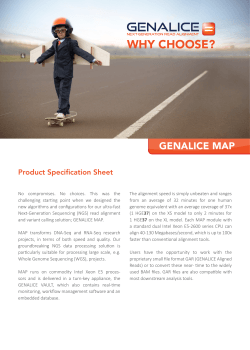
(page.08-09) How to Use Standards – Overseas Standards – Kozo UETA
(page.08-09) How to Use Standards – Overseas Standards – Kozo UETA Designing Department When applying a standard to an overseas project, requirements in customer specifications should be regarded as the basis. The first thing you should do at the start of design is to read customer specifications carefully and determine what is required. In any project, such requirements are described in detail. Generally, the code(s) for standard(s) to be applied are also specified as tools to have more detailed requirements satisfied. Multiple standards apply in some projects, while the number of applicable standards is limited to only one in others; this depends on the character of a project. Accordingly, a manufacturer must fulfill the task of designing and manufacturing vehicles that meet designated standard(s). Customer specifications are not similar to each other, but vary according to the character and culture of each nation and other related circumstances. Therefore, a vehicle manufacturer must understand the criteria involved in specifications in light of these factors. Though detailed customer requirements are shown in specifications, too many items would be included in specifications if the functions and features of all small parts, as well as those of components consisting of them, have to be specified. Accordingly, it is very difficult to simply dictate all details of requirements. Standards represent the summation of past technical records and experiences, as well as requirements and criteria based on circumstances in each nation. Therefore, conforming to standards is the surest and most reasonable way to satisfy customer requirements. In step with the current internationalization of the world, active efforts are being made to integrate standards that have been developed independently in various countries. In many cases, however, standards are still relied on that meet the particular circumstances of a nation. While Japanese customers mainly use JIS, Europe has its own standards of an equivalent importance, such as Germany’s DIN and France’s NFF. Internationally, however, all these standards are in low esteem. Therefore, much labor is needed when applying any of the standards, e.g. to translate them into English and prepare tables comparing different standards. ● Design and Standards Next, I will discuss the relationship between design and standards, taking combustion performance as an example and considering international requirements. The first stage of design is the determination of basic specifications, involving the preparation of a form drawing embodying these specifications. Next, a basic section drawing incorporating the specifications is prepared. In an overseas project, the actual design of part forms etc. starts only after determining most of the materials to be used during the preparation of a basic section drawing. Observing these procedures, namely first selecting materials and then determining shape, it is very important with regard to the ceiling, interior panels, seal materials, insulating materials, rubber and plastic parts etc. A condition that must be satisfied absolutely is to ensure that materials meet the combustion performance required by the customer. This is particularly important when materials are selected in Japan, because only a limited number of materials are likely to meet the requirements of a foreign customer. Even if there are some materials that appear to satisfy the requirements, they are often untested and therefore must be tested anew. The test process, from the collection of samples to the preparation of a final report, usually takes a period of more than one month and costs of nearly half a million yen. The worst case scenario is that some of tested materials turn out to be unusable. In such a case, a test report may be issued after a project has made some headway, necessitating a design review or even the cancellation of an already started manufacturing process. The entire project must be started all over again; from the selection of materials. (In fact, I once made this hard experience.) To avoid this scenario, it is important to identify materials that meet specifications (or a combustion standard in this case) at the initial stage of design, and determine what materials to use. ● Combustion Standard Regarding the combustion standard, the basic requirement in a project in the U.S. is to conform to NFPA 130 of the NFPA (National Fire Protection Association) standard. NFPA 130 specifies mandatory test items, and values on which judgment on a pass or a failure must be based. In most cases, test methods must be determined so as to conform to the ASTM (American Society for Testing and Materials) standard. The corresponding Japanese standard features the evaluation categories: “non-combustible,” “highly incombustible” and “incombustible.” However, the U.S. standard is quite different from the Japanese one in that it is based totally on quantitative evaluation: discarding such terms as “combustible” and “incombustible,” the standard provides criteria for determining acceptability by quantifying the speed of flame development and the volume of smoke. Recently, it also calls for the analysis of occurring gas to evaluate toxicity. ASTM E 119 represents another characteristic requirement: it demands that the structures of a floor and a roof should undergo combustion tests in a form equivalent to an actual part. During the test, a test sample, i.e. a floor or a roof manufactured to actual specifications, is placed on a furnace heated to a temperature of nearly 900℃, to check whether the sample exhibits a required performance in terms of flame resistance. The time of heating on the furnace in a test varies according to customer. Generally, 30 minutes of heating is required for a floor structure of the present type. During a test, a weight equivalent to that of a specified number of passengers is placed on a sample, and a furnace is heated to a specified temperature. The purpose of the test is to demonstrate that flame does not penetrate a floor, and that the floor surface temperature does not rise above a specified level. Fig. 1 shows a scene from an actual floor flame resistance test. Fig. 2 is a graph showing temperature measured in a heated furnace. The rigor of testing according to ASTM E 119 can be understood by imagining a floor that is heated directly from below at this temperature. ● Conclusion This chapter introduced some requirements in foreign standards, taking the floor flame resistance test as an example. How to understand and use standards in the international community is a skill that contributes to shortening the design period, reducing costs and providing high quality vehicles which satisfy customers. Also, the surest way to make customers comfortable and win their trust is to conform to standards perfectly as required. Insulation (Thermo couple and cushion) Cable (Connecting with the thermometers) Furnace outside cover Sample exhibits (Black colored) Weight (10kg / peace , equivalernt as passenger s weight) Fig.1 Outside view of combustion test on a heated furnace. Fig. 2 Temperature measured in a heated furnace.
© Copyright 2025




















![Construction Documents and the Contract [Compatibility Mode]](http://cdn1.abcdocz.com/store/data/001254175_1-26050cf6428287b03cbf125da572d9e5-250x500.png)
